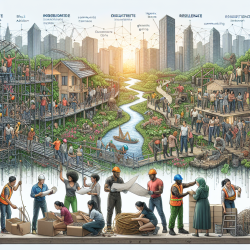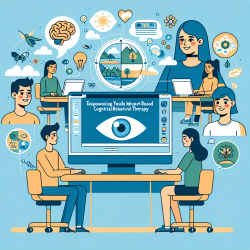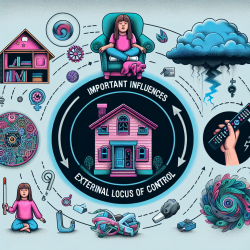The concept of resilience has gained significant importance in recent years as communities worldwide face increasing challenges from both natural and manmade disasters. The establishment of a regional interdisciplinary resilience center, as highlighted in the research article "Establishing a Regional Interdisciplinary Resilience Center: A Bottom-Up Approach," provides valuable insights for practitioners aiming to enhance their skills and contribute to community resilience.
The Importance of a Bottom-Up Approach
The research emphasizes the significance of a bottom-up approach in developing a resilience center. This method democratizes the process by involving a diverse range of scholars and stakeholders, ensuring that the center's mission and design are inclusive and reflective of the community's needs. For practitioners, adopting this approach means actively engaging with various disciplines and stakeholders to create comprehensive solutions tailored to specific regional challenges.
Key Outcomes for Practitioners
- Interdisciplinary Collaboration: Practitioners should seek opportunities for collaboration across different fields. By working with experts from various disciplines, they can develop holistic solutions that address multiple aspects of resilience.
- Community Engagement: Engaging with community members is crucial for understanding local needs and priorities. Practitioners should facilitate open dialogues and involve community members in decision-making processes to ensure that resilience initiatives are relevant and effective.
- Continuous Learning: The dynamic nature of resilience requires practitioners to stay informed about the latest research and best practices. Attending conferences, participating in webinars, and reading relevant publications can help them stay updated and improve their skills.
The Role of Practitioners in Enhancing Resilience
Practitioners play a vital role in enhancing community resilience by implementing strategies that promote resourcefulness, rapidity, robustness, and redundancy. They can achieve this by:
- Developing Resilience Indicators: Establishing clear indicators helps measure progress and identify areas for improvement. Practitioners should work with interdisciplinary teams to develop comprehensive indicators that capture the complexity of resilience.
- Cultivating Partnerships: Building strong partnerships with local governments, non-profits, and businesses is essential for pooling resources and expertise. These collaborations can lead to more effective and sustainable resilience initiatives.
- Pursuing Further Research: Encouraging further research on multi-disaster resilience can provide valuable insights into new strategies and technologies. Practitioners should support research efforts and consider participating in studies that align with their interests.
A Call to Action
The establishment of a regional interdisciplinary resilience center serves as an inspiring example for practitioners seeking to improve their skills and contribute to community resilience. By embracing a bottom-up approach, fostering collaboration, engaging with communities, and pursuing continuous learning, practitioners can play a pivotal role in building stronger, more resilient communities.
If you are interested in delving deeper into this topic, I encourage you to read the original research paper titled "Establishing a Regional Interdisciplinary Resilience Center: A Bottom-Up Approach".










